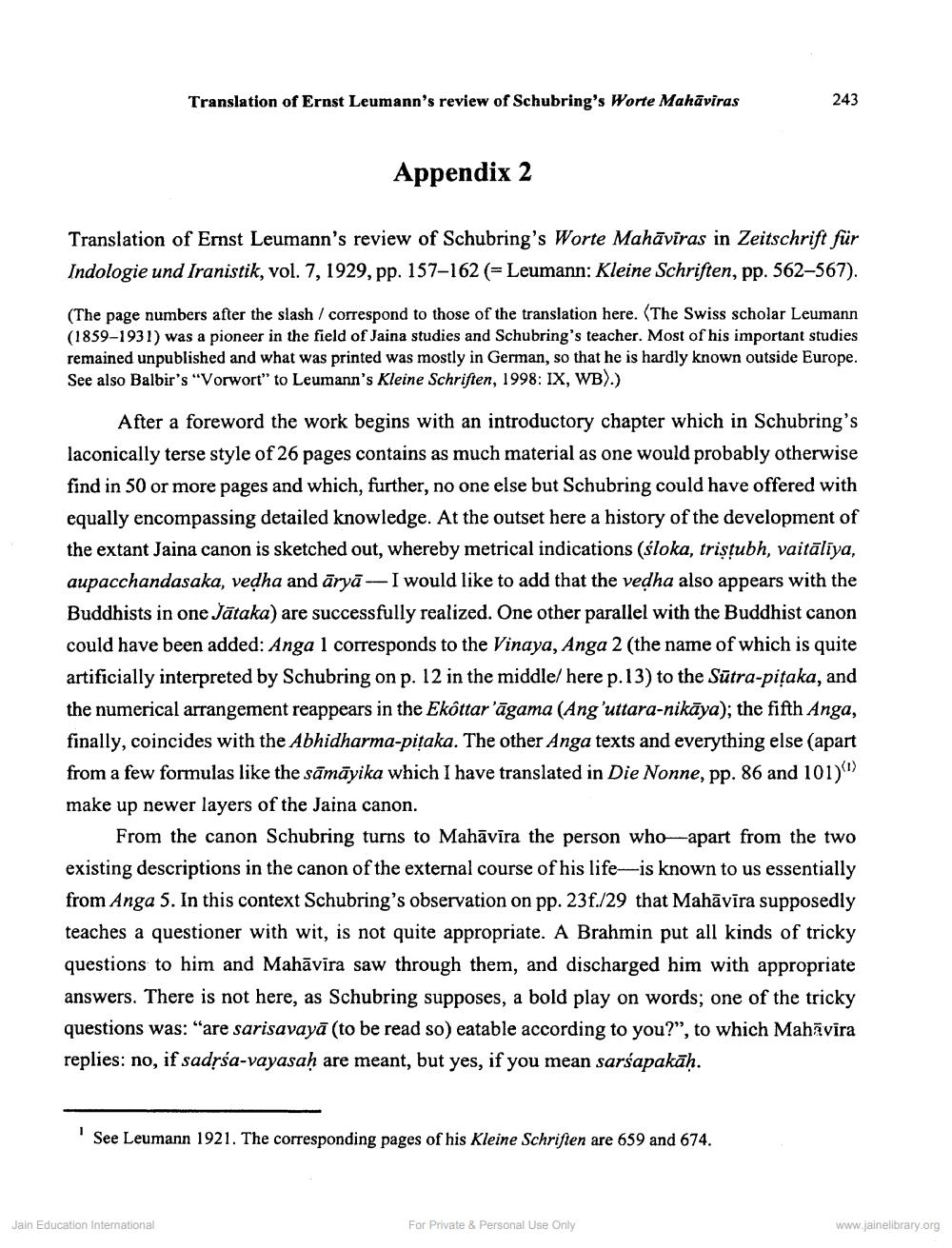________________
Translation of Ernst Leumann's review of Schubring's Worte Mahaviras
Appendix 2
Translation of Emst Leumann's review of Schubring's Worte Mahāvīras in Zeitschrift für Indologie und Iranistik, vol. 7, 1929, pp. 157-162 (Leumann: Kleine Schriften, pp. 562-567).
(The page numbers after the slash / correspond to those of the translation here. (The Swiss scholar Leumann (1859-1931) was a pioneer in the field of Jaina studies and Schubring's teacher. Most of his important studies remained unpublished and what was printed was mostly in German, so that he is hardly known outside Europe. See also Balbir's "Vorwort" to Leumann's Kleine Schriften, 1998: IX, WB).)
243
After a foreword the work begins with an introductory chapter which in Schubring's laconically terse style of 26 pages contains as much material as one would probably otherwise find in 50 or more pages and which, further, no one else but Schubring could have offered with equally encompassing detailed knowledge. At the outset here a history of the development of the extant Jaina canon is sketched out, whereby metrical indications (sloka, triṣṭubh, vaitālīya, aupacchandasaka, vedha and ārya-I would like to add that the veḍha also appears with the Buddhists in one Jataka) are successfully realized. One other parallel with the Buddhist canon could have been added: Anga 1 corresponds to the Vinaya, Anga 2 (the name of which is quite artificially interpreted by Schubring on p. 12 in the middle/ here p. 13) to the Sūtra-pitaka, and the numerical arrangement reappears in the Eköttar 'agama (Ang'ullara-nikāya); the fifth Anga, finally, coincides with the Abhidharma-pitaka. The other Anga texts and everything else (apart from a few formulas like the samayika which I have translated in Die Nonne, pp. 86 and 101) make up newer layers of the Jaina canon.
From the canon Schubring turns to Mahāvīra the person who-apart from the two existing descriptions in the canon of the external course of his life-is known to us essentially from Anga 5. In this context Schubring's observation on pp. 23f./29 that Mahavira supposedly teaches a questioner with wit, is not quite appropriate. A Brahmin put all kinds of tricky questions to him and Mahāvira saw through them, and discharged him with appropriate answers. There is not here, as Schubring supposes, a bold play on words; one of the tricky questions was: "are sarisavayā (to be read so) eatable according to you?", to which Mahavira replies: no, if sadrśa-vayasaḥ are meant, but yes, if you mean sarsapakāḥ.
1
See Leumann 1921. The corresponding pages of his Kleine Schriften are 659 and 674.
Jain Education International
For Private & Personal Use Only
www.jainelibrary.org




